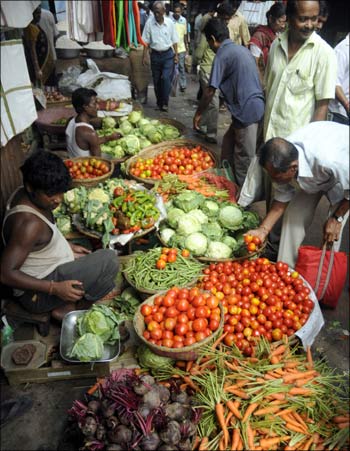
The Reserve Bank of India is highly concerned with soaring inflation and the crushing impact of the weight of rising prices of food items and other essential commodities on the common man.
So on Tuesday, RBI raised its key policy rates for the fourth time this year, taking more steps to control soaring prices even as the economy shows a strong rebound.
The bank said that even as food price inflation and, more generally, consumer price inflation have shown some moderation, they are still in double digits. Non-food inflation has risen and demand side pressures are clearly evident. With growth taking firm hold, the balance of policy stance has to shift decisively to containing inflation and anchoring inflationary expectations.
The RBI did not change CRRF or Bank Rate and kept these at 6.0 per cent. Repo Rate has been increased under the Liquidity Adjustment Facility (LAF) by 25 basis points from 5.5 per cent to 5.75 per cent with immediate effect.
Reverse Repo Rate has been raised under the LAF by 50 basis points from 4.0 per cent to 4.50 per cent with immediate effect.
Click NEXT to read why RBI raised interest rates. . .
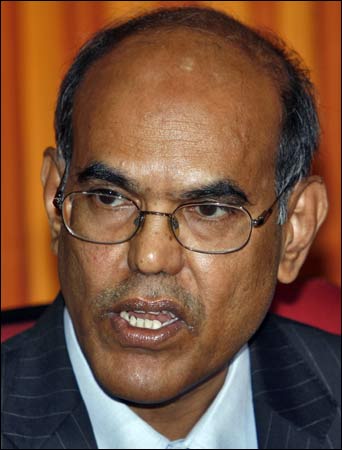
Why did RBI increase interest rates?
The most important reason is to curb rising inflation, and secondly to suck out the liquidity, or money, from the system so that it does not stoke further inflation.
What will happen due to rate hike?
The RBI hopes that its move will help:
1. Moderate inflation by reining in demand pressures and inflationary expectations. This means that prices of food items and other essential commodities are expected to drop over the next 6-9 months.
2. Maintain financial conditions conducive to sustaining growth.
3. Generate liquidity conditions consistent with more effective transmission of policy actions.
4. Reduce the volatility of short-term rates in a narrower corridor.
Click NEXT to read how this affects the common man. . .
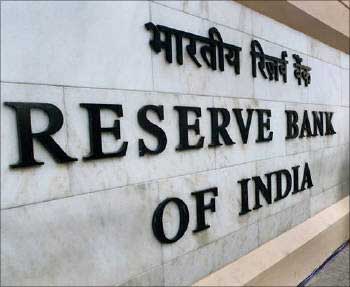
Rate hike: How does it affect the common man?
After a rate hike, commercial banks normally increase their lending rates: meaning, they hike interest rates for home loans, car loans, personal loans, etc.
Experts meanwhile feel that banks are unlikely to hike lending rates in the short term even though the RBI hiked interest rates more than expected. But one more round of increase in key rates by the RBI will lead to a hike in home loan, personal loan, car loan, etc rates.
However, currently this means that there will be no impact on home loan/personal loan EMIs in the short term.
What about long-term impact?
Interest rate hikes adversely affect the long-term payments of the loans as they have a direct impact on your equated monthly installments (EMI).
For example, repayments may increase by over Rs 3.5 lakh (Rs 350,000) over a 20-year period on a Rs 20 lakh (Rs 2 million) home loan, if the bankers hike interest rates by up to 1 per cent.
This means that consumers may have to fork out up to Rs 1,500 more every month for a home loan of Rs 20 lakh, as bankers say that interest rates could go up by 0.5-1 per cent after RBI's hawkish policy aimed at containing inflation.
Car loan and personal loan rates too are likely to be similarly impacted in the longer term.
So this is how RBI move to hike rates could affect you in the long term; especially if inflation does not come down and the central bank is forced to increase key policy rates again.
Why is RBI so worried? . . .

What worries RBI about inflation?
The current inflation scenario is worrisome for a number of reasons. First, WPI (Wholesale Price Index) inflation has been in double digits since February 2010. Headline inflation, as measured by year-on-year variation in WPI, rose to 10.6 per cent in June 2010, up from 10.2 per cent in May 2010.
Notably, WPI inflation based on revised data for March at 11.0 per cent and for April at 11.2 per cent, was higher by over one percentage point as compared with the provisional numbers. If this pattern continues, final WPI inflation numbers for recent months can be expected to be higher.
Second, even as primary food articles inflation continues to be in double digits (14.6 per cent), year-on-year WPI non-food manufactured products (weight: 52.2 per cent) inflation, which was (-) 0.4 per cent in November 2009, rose sharply thereafter to 5.4 per cent in March 2010 and further to 7.3 per cent in June 2010.
Non-food items inflation (WPI excluding food products and food articles), which was near zero in November 2009, rose sharply to 10.6 per cent by June 2010. Significantly, non-food items contributed over 70 per cent to WPI inflation in June 2010, suggesting that inflation is now very much generalised.
Third, notwithstanding some moderation in recent months, consumer price inflation, measured by various indices, remains in double digits.
Click NEXT to find out what influenced RBI. . .
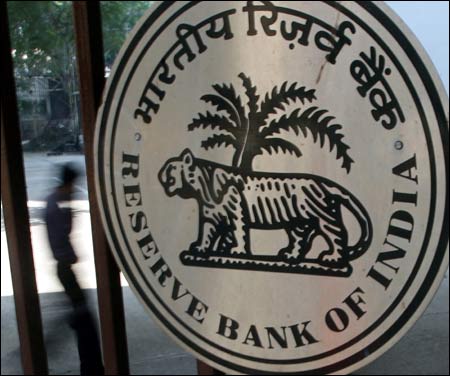
What influenced RBI move?
The RBI's stance to increase rates was influenced by three major factors:
First, domestic economic recovery is firmly in place and is strengthening. The 7.4 per cent growth in 2009-10 despite weak global growth and the insignificant contribution of the agriculture sector is a testimony of the resilience of the Indian economy.
The Reserve Bank's upward revision of the GDP growth projection for 2010-11 to 8.5 per cent (from 8.0 per cent with an upside bias in April 2010) indicates that the economy is steadily reverting to its pre-crisis growth trajectory. However, even as this is happening, prospects of a sustained global recovery appear to be increasingly uncertain, with possible adverse consequences for India.
Second, inflationary pressures have exacerbated and become generalised, with demand-side pressures clearly evident. Capacity constraints are visible in several sectors and pricing power is returning to producers.
Inflationary expectations also remain at an elevated level. Given the spread and persistence of inflation, demand-side inflationary pressures need to be contained.
Third, despite the increase in the policy rates by 75 basis points cumulatively, real policy rates are not consistent with the strong growth that the economy is now witnessing. As articulated in previous policy statements/reviews, lower policy rates can complicate the inflation outlook and impair inflationary expectations, particularly given the increased generalisation of inflation.
It is, therefore, imperative that we continue in the direction of normalising our policy instruments to a level consistent with the evolving growth and inflation scenario, while taking care not to disrupt the recovery.
Click NEXT to read what RBI plans to do in the coming days. . .
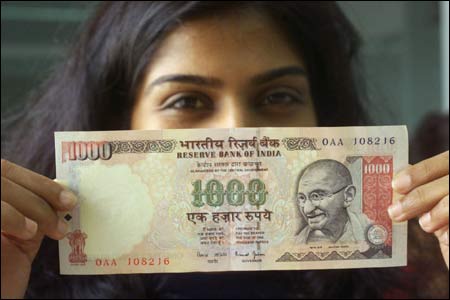
Going forward, what will drive RBI's stance?
RBI said that the outlook on inflation will be shaped by the following factors:
First, the spatial and temporal distribution of rainfall in the remaining period of south-west monsoon 2010 is critical. A good kharif harvest will act as a major dampener on short-term food price inflation.
Second, global energy and commodity prices have been showing distinct signs of softening over the past few weeks as expectations of global growth have moderated. If energy prices continue to decline, this will offset the inflationary impact of the recent fuel price hike. Further, idle global capacity in a range of sectors will allow competitive imports to reduce the momentum in domestic prices.
Third, consequent on the strengthening of domestic growth drivers, demand-side pressures are building up.
The Reserve Bank, taking into account the emerging domestic and external scenario and the policy measures it is adopting, feels that baseline WPI inflation will fall to 6 per cent by March 2011.
Click NEXT to find out just what is CRR, repo rates, etc. . .
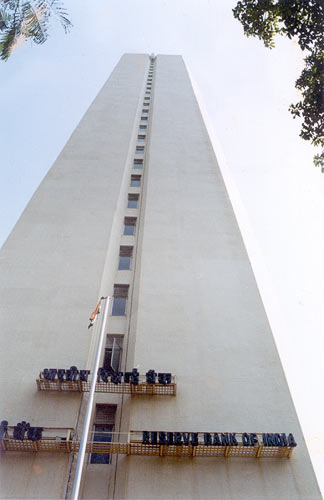
What is Bank Rate?
Bank Rate is the rate at which RBI allows finance to commercial banks. Bank Rate is a tool that RBI uses for short-term purposes. Any upward revision in Bank Rate is an indication that banks should also increase lending and deposit rates.
What is CRR?
Cash reserve Ratio (CRR) is the amount of funds that the banks have to keep with the RBI. If the RBI increases the CRR, the available amount with the banks comes down. The RBI uses the CRR to drain out excessive money from the system.
What is Reverse Repo rate?
Reverse Repo rate is the rate at which the RBI borrows money from commercial banks for a short-term. Banks are happy to lend money to the RBI since their money is in safe hands and they get good interest.
An increase in reverse repo rate can prompt banks to park more funds with the RBI to earn higher returns on idle cash. It is also a tool which can be used by the RBI to drain excess money out of the banking system.
What is a Repo Rate?
The rate at which the RBI lends short-term money to commercial banks is called repo rate. It is an instrument of monetary policy. Whenever banks have any shortage of funds they can borrow from the RBI. A reduction in the repo rate helps banks get money at a cheaper rate, while an increase in repo rate means that banks will have to borrow at higher rates.